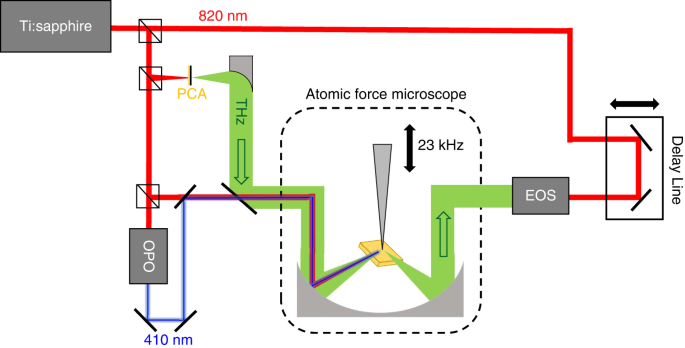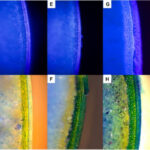2023-04-19 ブラウン大学
これまで赤色光や赤外線を使用することが多かったナノスケール材料の研究で、青色光を用いることは課題が多く、今回が初めての成功例である。この手法は、長い波長の光を使用していた従来の手法に比べ、新しい材料の研究や理解を可能にする。
<関連情報>
青色光による近接場テラヘルツ非線形光学系 Near-field terahertz nonlinear optics with blue light
Angela Pizzuto,Pingchuan Ma & Daniel M. Mittleman
Light: Science & Applications Published:19 April 2023
DOI:https://doi.org/10.1038/s41377-023-01137-y

Abstract
The coupling of terahertz optical techniques to scattering-type scanning near-field microscopy (s-SNOM) has recently emerged as a valuable new paradigm for probing the properties of semiconductors and other materials on the nanoscale. Researchers have demonstrated a family of related techniques, including terahertz nanoscopy (elastic scattering, based on linear optics), time-resolved methods, and nanoscale terahertz emission spectroscopy. However, as with nearly all examples of s-SNOM since the technique’s inception in the mid-1990s, the wavelength of the optical source coupled to the near-field tip is long, usually at energies of 2.5 eV or less. Challenges in coupling of shorter wavelengths (i.e., blue light) to the nanotip has greatly inhibited the study of nanoscale phenomena in wide bandgap materials such as Si and GaN. Here, we describe the first experimental demonstration of s-SNOM using blue light. With femtosecond pulses at 410 nm, we generate terahertz pulses directly from bulk silicon, spatially resolved with nanoscale resolution, and show that these signals provide spectroscopic information that cannot be obtained using near-infrared excitation. We develop a new theoretical framework to account for this nonlinear interaction, which enables accurate extraction of material parameters. This work establishes a new realm of possibilities for the study of technologically relevant wide-bandgap materials using s-SNOM methods.



